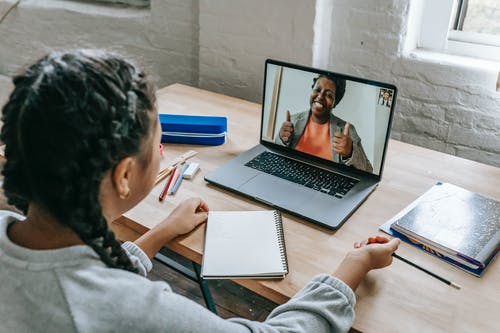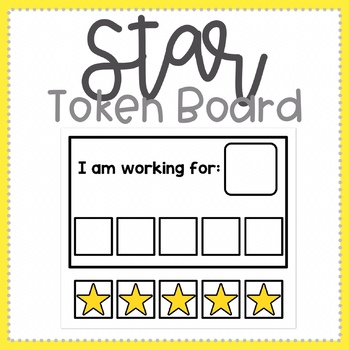
In this post straight from The Sunshine Method desk, we'll walk you through some of our tutor's favorite strategies to keep online sessions interactive, fun, and something you will both want to come back to week after week!
Many of these tips are directly from fellow Sunshine Method tutors! Their advice is broken up into two different age groups, since some strategies may work better for younger learners or older learners, and vice-versa.
Read on, and share some of your own strategies as well!
Tips for Engaging Younger Children (K-5th gr)
- Incorporate Music Into Your Lessons.

Music is a universal language. Listening to relaxing music while learning has proven to help students destress and improve their mood and motivation. You can use songs to help with memorization, or the rhythm of songs to assist reading and pronunciations.
Our tutor Karen Riegler Kohl uses music as a reward after lessons, saying that "I also leave my guitar sitting here so the kids can see it, and a lot of kids like music!" Music is a great way to reward children and help them stay interested and motivated.
Check out this blog showing many of the different ways that you can incorporate music into your lessons. And don't worry! You don't need any previous musical training or resources.
- Ask Your Students What They Enjoy, And Tailor Your Lessons Accordingly.
-png.png?width=599&name=Untitled%20(3%20%C3%97%202%20in)-png.png)
Learning your students' hobbies and interests will create a better connection between you and them, and you can structure your lessons around their interests. Tutor Judson Hendry says that "If you can relate the work they are struggling with to something they enjoy, it will help them stay motivated and continue working until they understand the concept".
For example, if a student loves sports, then you can create math questions using sports numbers. Children will also feel more comfortable and open around you if they realize you listen and tailor your lessons to them. Using your student's interests in lessons has been proven to keep them more engaged and hold their attention better.
This also gives you an opportunity to share your own interests, and show your student that you are much than just a tutor, but a whole person as well!
- Use Props and Toys in Your lessons.

Maintaining the attention span of anyone on a computer is difficult, but a great way to keep your students engaged for the entire lesson is by using props in your lessons. Especially for younger students, online learning can be very distracting, so using props or toys during your lessons helps to keep them focused and improve their knowledge recall.
Check out this blog for more strategies on the effectiveness of using props. The best advice, be as creative as possible with using props to teach!
Our tutor Shayna Parsons says that “I think children learn best through hands-on activities. So I try my best to incorporate hands-on learning in my remote classroom. I use props, rewards and Total Physical Response (TPR) to help keep the child engaged".
Many students are able to learn better visually as well, so being able to associate certain props with a lesson can help them greatly.
Connect with a child's parent or caregiver to discuss what props or toys they may already have in the house, and remember, with a little creativity, anything can be a tool!
- Take Your Students on a Virtual Field Trip or Scavenger Hunt.
%20(1)-png.png)
There are tons of virtual field trips that are easily accessible through the Internet, so why not take advantage! Together, you can take students around the world on immersive experiences that will capture their attention and their imagination. Virtual field trips range from YouTube videos in outer space to virtual tours in national parks and museums. These can be used as a fun reward for your students, or they can be incorporated directly into lesson plans.
Virtual field trips have become very popular, and they have been found to "allow a more inclusive student learning experience, particularly for students with disabilities that mean they physically struggle with taking part in a field trip".
Virtual scavenger hunts can also be a fun way to reward your students for their hard work, while also challenging them. Check out this list of virtual scavenger hunt ideas for all ages!
A Google Doc with a variety of different virtual field trips can be found here!
- Create a Fun Background That Makes Your Students Feel Like They’re In a (fun) Learning Environment.
-png.png?width=655&name=Untitled%20design%20(3)-png.png)
First things first, make sure that the space behind you that is visible on cameraduring virtual sessions is neat and ideally colorful. Making it look similar to a classroom can help a student get into the mindset that they are in school. Zoom, one of the more popular online platforms, allows for digital backgrounds that can easily be swapped and customized, in case you have to teach in an area with a busy background.
During online classes, many professors changed their background frequently, and one said that "Whenever I get the chance to add some fun to class I do it". Changing your background can be a refreshing and fun way to get your student's attention! Check out this Zoom Support article that shows you how to easily change your background!
6. Create a Penpal Program Between Your Students!
-png.png)
Penpals have long been proven to be beneficial for young children by helping with their reading and writing skills, as well as exposing them to different cultures and backgrounds. It can also help a child make a friend, and create excitement for their lessons when they get to read what their Penpal wrote to them. Penpals also help develop young children's social skills, making it a great idea all around!
Our tutor Brittany Phillips is has setting up a Penpal program with her students, and we hope some of you decide to do the same! She says "The PenPal program has worked wonders to motivate some of my students to write, especially when writing is a difficult subject."
Check out this great resource for creating a Penpal program of your own and making sure it is effective and fun for the children.
7. Use a Token Board to Reward Students for Completing Tasks.

A token board is a visual system of providing children with a reward for good behavior or completing activities. Token boards can be particularly helpful for students with ADHD or ODD, or any other behavioral challenges.
A token board works by having the student pick a desired activity, and then after a certain amount of "tokens" (other tasks they need to do) the child gets the reward of their desired activity. Token boards are proven strategies to incorporating positive reinforcement, and motivating children's behavior and participation, especially in one-on-one sessions.
There have been countless studies on the effectiveness of a token board, and the results of the studies have "shown improvement in the behavior and engagement of the students".
Check out this great resource for collaborating with your student's parent or caregiver to set up a token board and learn how to effectively incorporate token boards into your sessions!
Tips for older children (6th gr-12th gr)
- Record Your Lessons.
.png?width=500&name=Untitled%20design%20(9).png)
If you have permission from the student's parent or caregiver, a great option may be to record your lessons so the student can access them later. Being able to watch through the recording again can be very helpful if the student forgets something or is still struggling. Having indefinite access to the lesson benefits your students if they need it.
Check out this Zoom help article showing you how to record and where your recorded Zoom meetings can be found! If you are using a different system, and want more guidance on how to record sessions, please let us know!
- Ask Your Students How They learn Best, and Cater Lessons Accordingly.
.png?width=567&name=Untitled%20design%20(7).png)
Every student learns differently, and chances are that they know what strategies work best for them. Creating an open dialogue between you and your students will also give them more confidence in you and your ability/willingness to help them learn. Some of us are auditory learners, and we understand things when they are explained to us, others learn visually and need to see the work laid out to understand it, and still others learn kinesthetically, and need to be more hands on. For many student's it may also be a combination of the three styles. You can learn more about the different learning styles here.
Check out this article here explaining how you can tell which way your students learn best, and what you can do to help accommodate their personal needs. There are also fun quizzes you can find here!
Tutor Sarah Diaz-Stone says that "Educators who gave me the flexibility and passion to engage in learning in an individual way changed my life and helped shape me into who I am today". Getting to know which method each individual student learns best can make lessons more efficient and productive.
- Let Your Students Explain the Concepts Back To You.
-png.png)
A great way to help your student grasp a concept or problem (and see how much of the content they have retained) is to have them try to explain it to back to you. By giving them an opportunity to look at the problem from a different perspective, you will have a better idea of the areas they feel confident in, and the areas that may have fallen through the cracks. This may also provide you more insight into the student's learning style when they are re-teaching you! Check out this great article showing the benefits of learning by teaching, and how you can incorporate this strategy into your lessons!
This is also a great opportunity to role play: Now they're the teacher, and you are the student! Studies have also shown that learning by teaching can be an effective way of enhancing the "teachers" own learning and understanding of the material.
- Create a Book Swap or Book Club Between Students.
.png?width=597&name=Untitled%20design%20(8).png)
Reading a book is like having a time machine and and passport all in one, yet we know that many student's struggle to find books that they connect with, or that they see themselves in.
There are bookstores that can provide book lists for specific ages groups, and can also help sponsor book swaps or book clubs. Another option is to sign sign up for an online/physical library card from your local library, and use an app like Libby to download books! Students can discuss the books with you and talk about why they enjoyed it., and also recommend books to their fellow book club or book swap members. Book exchanges specifically have been proven to increase literacy and social skills among participants!
5. Use the Zoom Whiteboard and Annotate Features

Zoom features a digital whiteboard that allows both the host and guest to write on the same screen, essentially serving as a blank piece of paper that you can share with your students. This is great for math problems or other key concepts that are better explained by being written out! Tutor Gregory Burnette says that he keeps students engaged by "opening my computer and sharing everything. I use the whiteboard often".
Zoom also allows you to annotate, write on, highlight, decorate, anything you want to do, on the page you are screen sharing. This can be very helpful for reading assignments and math assignments, and it makes explaining concepts much easier! Check out this guide to annotating on Zoom in case and start incorporating this lesser known feature into your sessions!
We'd love to hear from you! What tips and strategies have you been using to keep your sessions fresh and engaging?



